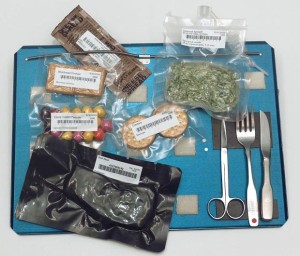According to the food safety nerd historians (and every HACCP class) the world of food safety was revolutionized by a partnership between NASA and Pillsbury.
Jennifer Ross-Nazzal writes about the history in Societal Impact of Space Flight.
Concerned about safety, NASA engineers specified that the food could not crumble, thereby floating into instrument panels or contaminating the capsule’s atmosphere. to meet the outlined specifications, food technologists at Pillsbury developed a compressed food bar with an edible coating to prevent the food from breaking apart. in addition to processing food that would not damage the capsule’s electronics, the food also had to be safe for the astronauts to consume.
 Almost immediately food scientists and microbiologists determined that the assurance of food safety was a problem. [Pillsbury microbiologist Howard] Bauman recalled that it was nearly impossible for companies to guarantee that the food manufactured for the astronauts was uncontaminated.
Almost immediately food scientists and microbiologists determined that the assurance of food safety was a problem. [Pillsbury microbiologist Howard] Bauman recalled that it was nearly impossible for companies to guarantee that the food manufactured for the astronauts was uncontaminated.
“We quickly found by using standard methods of quality control there was absolutely no way we could be assured there wouldn’t be a problem,” he said. To determine food safety for the flight crews, manufacturers had to test a large percentage of their finished products, which involved a great deal of expense and left little for the flights.
So HACCP was created.
Today, according to The Telegraph, American astronauts on the International Space Station are enjoying a risk-reduced and HACCP-inspired Thanksgiving meal including irradiated smoked turkey.
NASA Astronauts Terry Virts and Barry Wilmore cobbled together a festive feast by combining foods that are stocked on the station.
The meal also includes candied yams, freeze-dried dressing, cranapple desert, mashed potatoes, green beans and mushrooms.
Crew members get ‘bonus containers’ in which they are allowed to carry special items for specific holidays, like Thanksgiving or Christmas.
“The turkey they have available for Thanksgiving has been made shelf-stable by irradiation,” said Vickie Kloeris, ISS Food System Manager
“So this product is ready to eat and they just warm it up and eat out of a packet with a fork.
Mine is still roasting.
